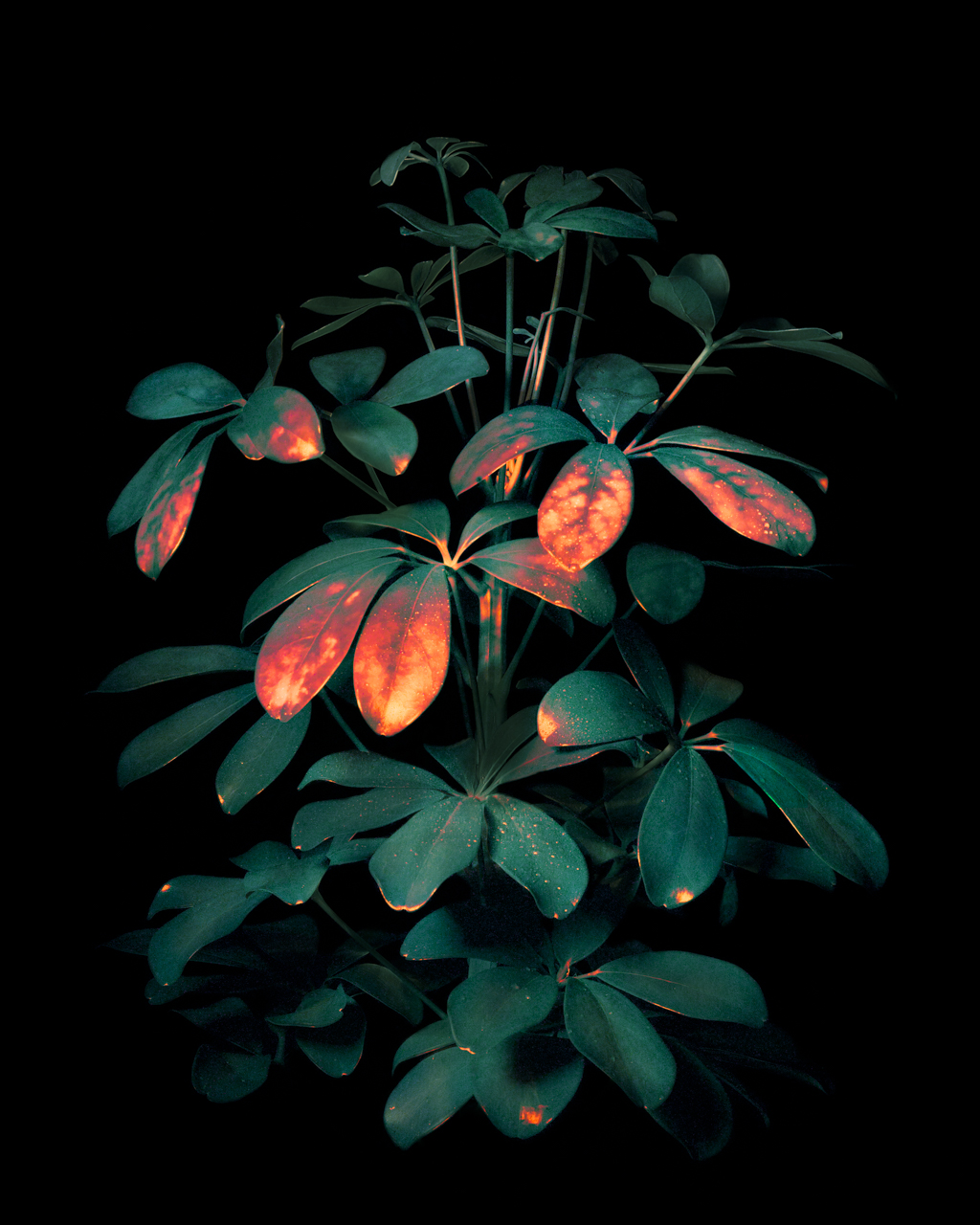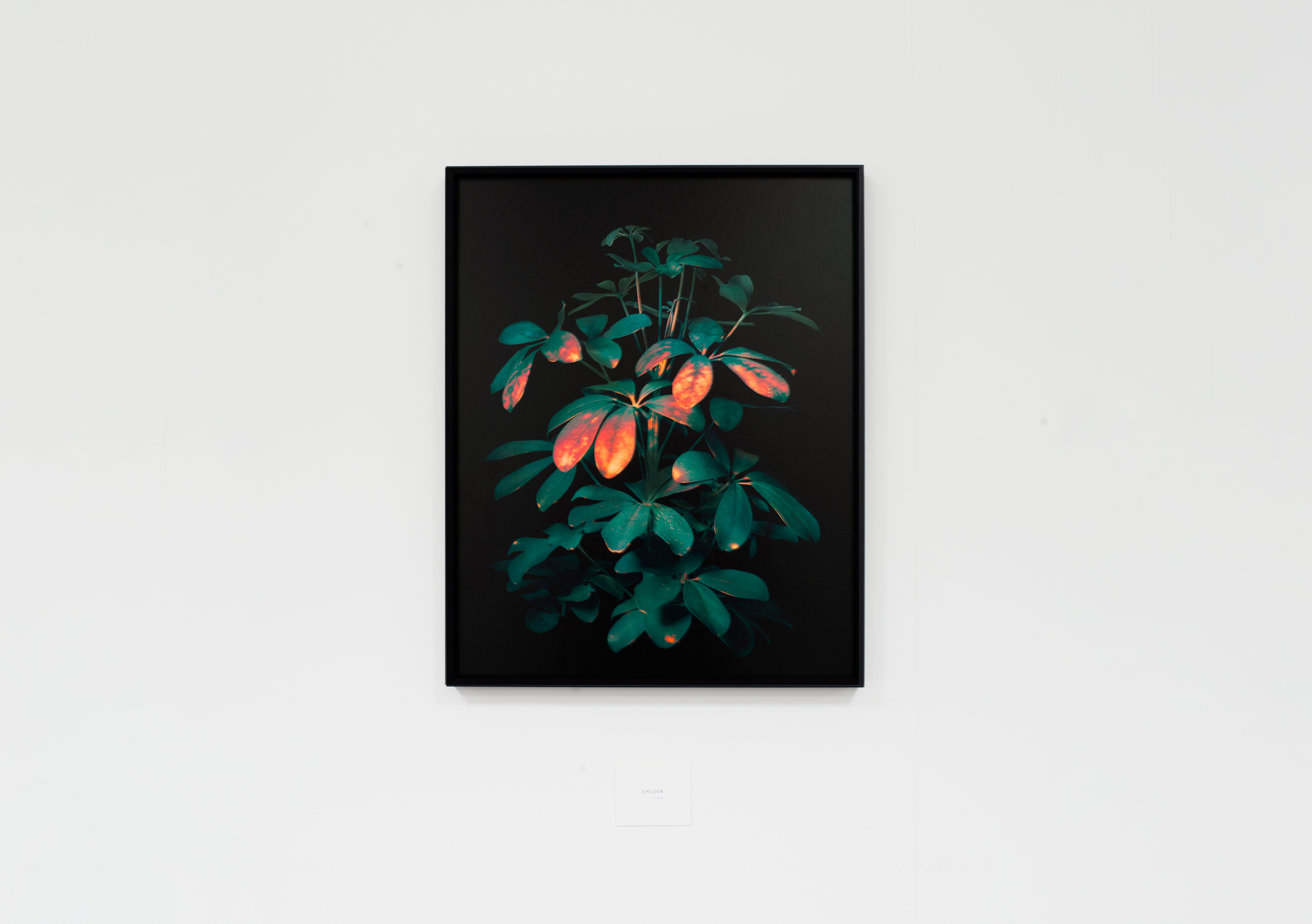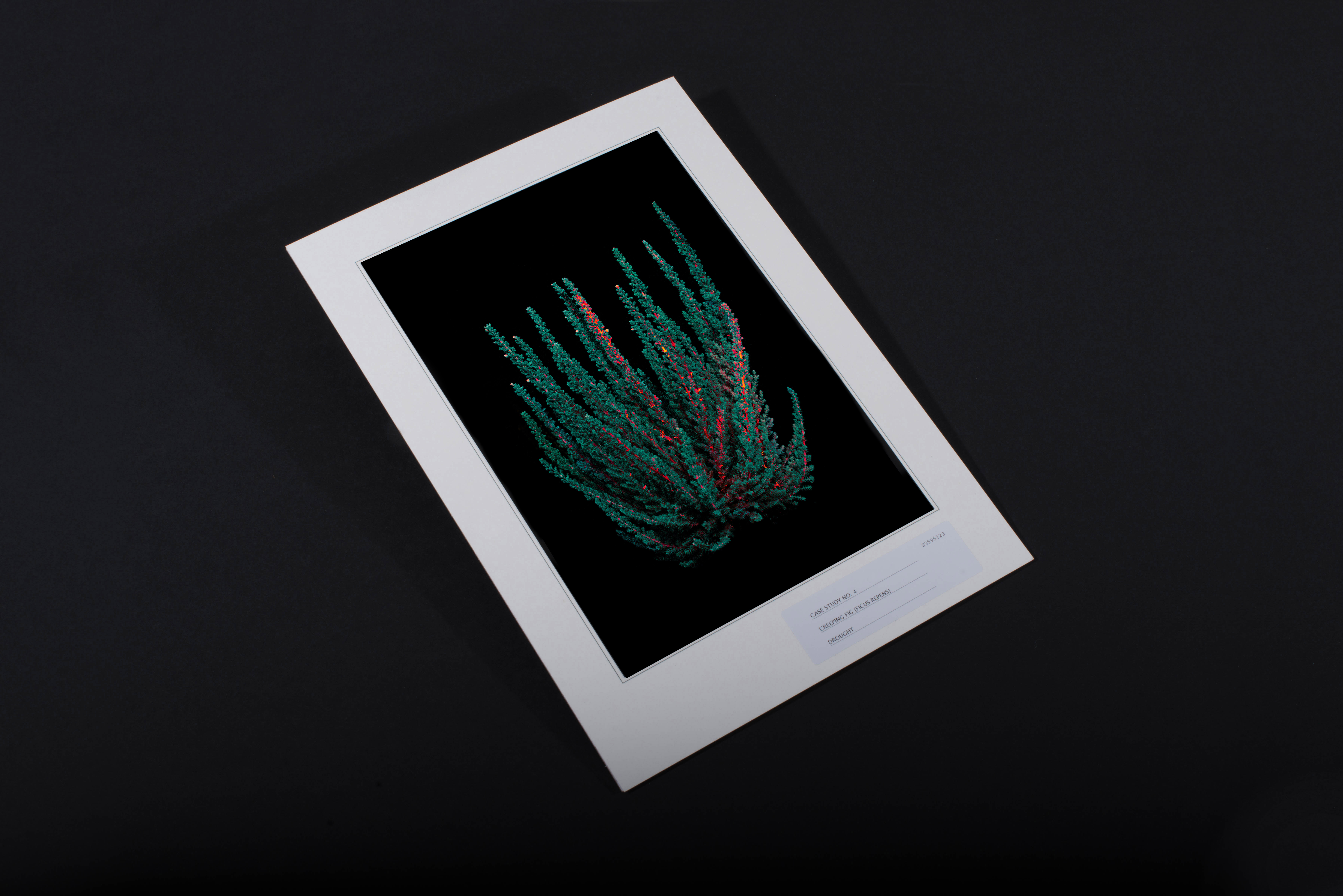Fluorescent Signals
FSA / 2015
About The Hidden Life of Plants
About The Hidden Life of Plants

↪︎ Fluorescent Signals, 2019, Mixed Memories, Yangzhou Culture Centre, China.
Plants emit fluorescence when under stress, a reaction that is usually imperceptible to the human eye. Fluorescent Signals allows us to look beyond our visible spectrum and enter a world where plants react directly to their environment.
FSA / 2017
About The Hidden Life of Plants
These images show the fluorescence plants emit when under stressful conditions. In my "botanical torture chamber" I exposed dozens of plants to toxins or other stressors, like chlorine, boiling water, hydrochloric acid, bleach, vinegar, and fire.
 ↪︎ #01 - Chlorine - Dwarf Umbrella Tree, 2015
↪︎ #01 - Chlorine - Dwarf Umbrella Tree, 2015 ↪︎ #02 - Muriatic Acid - Elephants Ear, 2015
↪︎ #02 - Muriatic Acid - Elephants Ear, 2015
↪︎ #04 - Fire, Flame Nettle, 2017
 ↪︎ #06 - Boiling Water - Hollyhock, 2017
↪︎ #06 - Boiling Water - Hollyhock, 2017 
↪︎ #08 - Bleach, Jade Plant, 2017

↪︎ #07 - Glyfosaat, Chinese Money Plan, 2021
FSA / 2017
About The Hidden Life of Plants
It is common to perceive plants as static, decorative objects. After all, we operate on disparate timescales. This radiant reaction to stress, however, is immediate. The images show the plant’s reaction to stress in the first 30 seconds, after which they repair themselves - or not - depending on the damage.
Our limited visual spectrum doesn’t allow us to see it with the naked eye, as we perceive only a sliver of the light that surrounds us. How would we relate to plants if we could see them react directly to our actions and touch?
 ↪︎ #01 - Chlorine - Dwarf Umbrella Tree, Fluorescent Signals, 2017, Galerie Heden, Den Haag. Framed print, museumglas (40x50cm)
↪︎ #01 - Chlorine - Dwarf Umbrella Tree, Fluorescent Signals, 2017, Galerie Heden, Den Haag. Framed print, museumglas (40x50cm) ↪︎ #05 - Publication with dichroic filter. Image: Drought, Creeping Fig, Fluorescent Signals, 2015.
↪︎ #05 - Publication with dichroic filter. Image: Drought, Creeping Fig, Fluorescent Signals, 2015.

↪︎ #03 - Publication document. Image: Heather - Vinegar, Fluorescent Signals, 2015.
FSA / 2017
About collaboration
This project was created in collaboration with Henk Jalink, PhenoVation. PhenoVation is a manufacturer of camera systems designed to capture chlorophyll fluorescence. Together, we adapted this technique to a full-frame photographic set-up.
↪︎ Read more
Written by Katerina Stathopoulou (curator at MoMa, New York) for Life Framer
09 / 2017
About Fluorescent Signals
From Life Framer edition IV – an OPEN CAL winner, judged by Katerina Statholoulu, curator at MoMa, New York
I was immediately pulled towards Lisa’s image. It’s beautifully structured, and the vivid reds and oranges of the leaf tips are foreign and striking. It’s a tactile, physical image and my first thought was that the fiery colors were heat prints left from human touch – a comment on our heavy-handed relationship with nature. I feel like it plays with the long and familiar tradition of still life photography (and painting) of plants and flowers, but with a bold and contemporary spin.
From reading the statement, I understand that it’s the result of stressing the plant with external elements (drought, hot water, chlorine…) and then capturing the infrared energy released, normally imperceptible to the human eye. It’s a considered way of depicting that fragility – how our actions as humans can damage our environment in ways that are often invisible. Warning signs hidden and so easy to overlook. There’s a subtle irony at play too – how that damage manifests itself in something so beautiful. It’s an experimental image, borne of investigation and process, and that’s to be admired.
